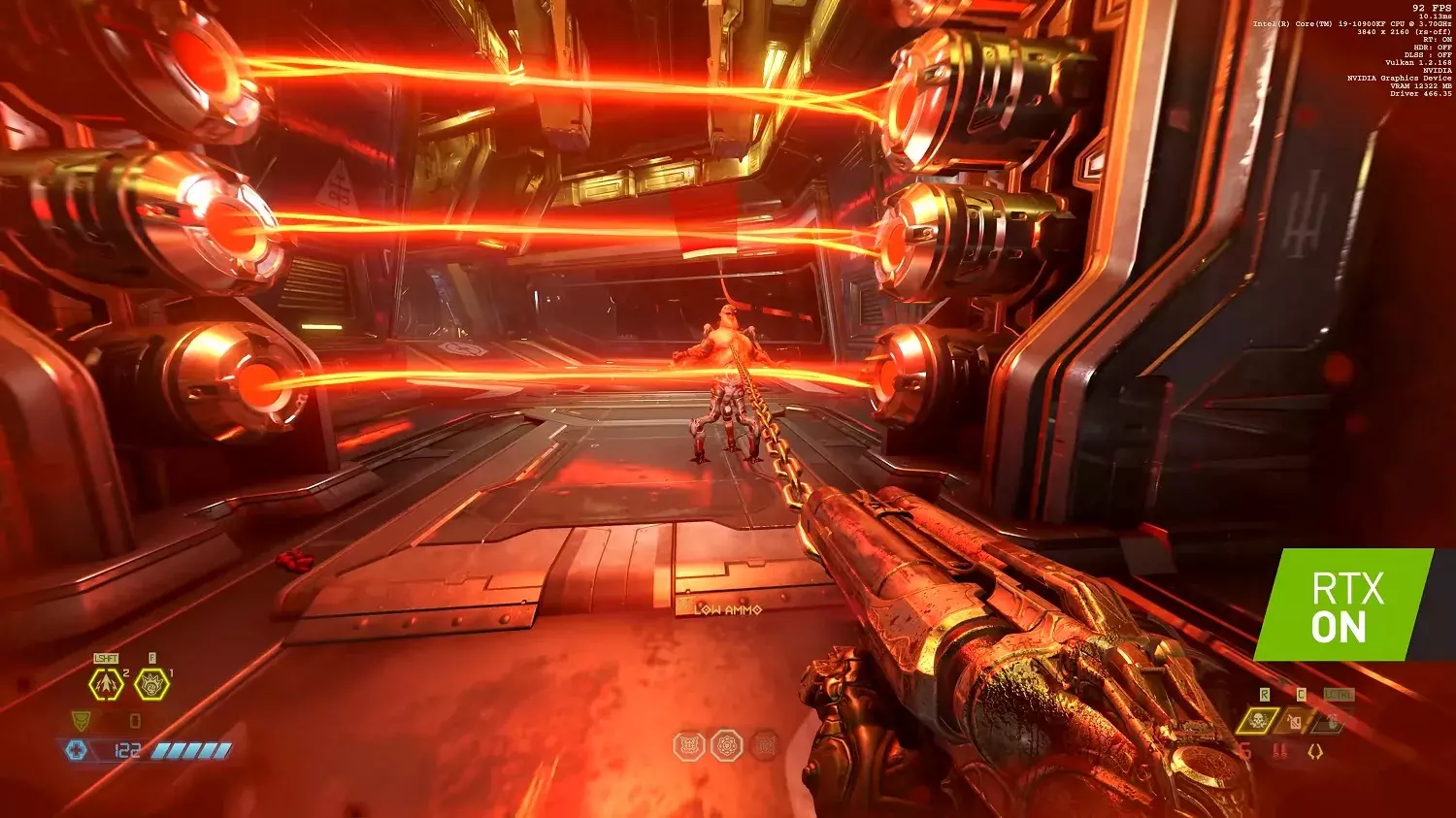In the ever-evolving realm of gaming, advancements in graphics technology have played a pivotal role in elevating the visual experience for players. One such groundbreaking innovation is ray tracing, a rendering technique that simulates the behavior of light to create incredibly realistic and immersive visuals. This comprehensive article explores the intricacies of ray tracing, its impact on gaming, the technology behind it, and how it is transforming the gaming landscape.
Understanding Ray Tracing:
1. What is Ray Tracing?
- At its core, ray tracing is a rendering technique used to simulate the way light interacts with virtual objects in a scene.
- It traces the path of rays of light as they travel through a virtual environment, simulating the complex interactions of light with surfaces, reflections, and shadows.
2. How Does Ray Tracing Work?
- Ray Generation: Rays are cast from the virtual camera into the scene.
- Intersection Testing: Rays interact with virtual objects, and the system calculates where they intersect.
- Reflection and Refraction: Rays simulate reflection and refraction, bouncing off surfaces or passing through transparent materials.
- Light Interaction: Rays trace the path of light, considering factors like surface materials, textures, and lighting conditions.
- Pixel Rendering: The final color of each pixel is determined based on the accumulated information from the traced rays.
3. Benefits of Ray Tracing:
- Realistic Lighting: Ray tracing enables the simulation of realistic lighting scenarios, including reflections, shadows, and global illumination.
- Improved Visual Realism: The technology contributes to lifelike visuals, making virtual environments indistinguishable from reality.
- Enhanced Immersion: By replicating the behavior of light, ray tracing enhances the immersive quality of game environments.

Evolution of Graphics Technology:
1. Traditional Rasterization vs. Ray Tracing:
- Traditional Rasterization: The conventional rendering technique used in gaming for decades, approximating lighting and shadows.
- Ray Tracing: A paradigm shift, offering a more accurate representation of light interactions for unparalleled realism.
2. GPU Advancements:
- Dedicated Ray Tracing Cores: Modern GPUs feature dedicated ray tracing cores, optimizing the rendering process and improving performance.
- Tensor Cores: Tensor cores, often found in NVIDIA GPUs, accelerate AI-driven processes, further enhancing graphics capabilities.
3. Integration into Game Engines:
- Unreal Engine and Unity: Leading game engines have integrated ray tracing capabilities, empowering developers to harness the technology seamlessly.
- Ease of Adoption: Game developers can now implement ray tracing without extensive technical hurdles.
Ray Tracing in Gaming:
1. Visual Enhancements:
- Realistic Lighting: Ray tracing brings dynamic and realistic lighting to games, with accurate portrayals of shadows, reflections, and ambient occlusion.
- Reflections: Surfaces, such as water and glass, exhibit lifelike reflections, adding a new dimension to in-game environments.
- Global Illumination: Ray tracing contributes to global illumination effects, enhancing the way light interacts with the entire scene.
2. Shadows and Ambient Occlusion:
- Soft Shadows: Ray tracing enables the rendering of soft, natural shadows with accurate penumbra effects.
- Ambient Occlusion: Realistic ambient occlusion enhances the perception of depth and realism in virtual environments.
3. Reflections and Refractions:
- Dynamic Reflections: Ray tracing allows for dynamic reflections, capturing real-time changes in the environment.
- Refractions: Transparent materials exhibit accurate refractions, creating convincing visual effects.
4. Hardware Acceleration:
- NVIDIA RTX Series: NVIDIA’s RTX series GPUs introduced dedicated hardware for ray tracing, significantly improving performance.
- Console Integration: Next-gen gaming consoles, like the PlayStation 5 and Xbox Series X, incorporate ray tracing capabilities for a consistent experience.
5. Game Titles Embracing Ray Tracing:
- Cyberpunk 2077: The highly anticipated title features ray tracing for enhanced visual fidelity.
- Minecraft: The iconic block-building game received a visual overhaul with ray tracing, showcasing its potential across diverse genres.
- Control: This action-adventure game leverages ray tracing for realistic lighting and reflections.
Challenges and Considerations:
1. Hardware Requirements:
- High Performance GPUs: Ray tracing demands substantial computational power, necessitating high-end GPUs for optimal performance.
- Hardware Limitations: Older GPUs may struggle to deliver a smooth ray tracing experience.
2. Development Complexity:
- Learning Curve: Implementing ray tracing requires developers to adapt to new techniques and technologies.
- Optimization Challenges: Striking a balance between visual fidelity and performance can be challenging.
3. Integration Across Platforms:
- Consistency Across Platforms: Ensuring a consistent ray tracing experience across a variety of gaming platforms presents challenges.
- Console Limitations: While next-gen consoles support ray tracing, they may have hardware limitations compared to high-end PCs.
4. Impact on Performance:
- Frame Rate Considerations: Ray tracing can impact frame rates, requiring developers to optimize for a smooth gaming experience.
- Variable Performance: The performance impact varies based on the complexity of scenes and the intensity of ray tracing effects.
The Future of Ray Tracing:
1. Advancements in Hardware:
- More Powerful GPUs: As GPU technology advances, future iterations are expected to deliver even more powerful ray tracing capabilities.
- Integration with AI: The fusion of ray tracing with AI-driven technologies may further enhance visual realism.
2. Expanded Game Support:
- Widespread Adoption: Ray tracing is anticipated to become a standard feature in upcoming game titles across genres.
- Cross-Platform Integration: Ensuring a seamless experience across PC and console platforms.
3. Innovation in Game Design:
- Creative Possibilities: Developers are likely to explore new creative avenues with ray tracing, redefining the visual language of games.
- Narrative Impacts: Realistic lighting and visuals may contribute to more immersive storytelling experiences.
4. Community and Modding Support:
- Community-Driven Enhancements: Gaming communities may contribute to ray tracing enhancements through mods and user-generated content.
- Modding Tools: Developers may provide modding tools to empower the community to implement ray tracing in existing and future games.
Conclusion: A New Era of Visual Realism
Ray tracing stands as a revolutionary force in the gaming industry, ushering in a new era of visual realism and immersion. While the technology is not without its challenges, the benefits it brings to the gaming experience are undeniably transformative. As hardware continues to evolve, and developers become more adept at harnessing the power of ray tracing, we can expect a future where the line between the virtual and the real becomes increasingly blurred.
For gamers, this represents an exciting journey into worlds that look and feel more authentic than ever before. The adoption of ray tracing across a diverse range of game genres signifies not just a technological advancement but a fundamental shift in how we perceive and engage with virtual environments. As we navigate this evolving landscape, the future promises not just better graphics but a deeper connection to the stories, characters, and adventures that define the rich tapestry of the gaming universe. Ray tracing, with its capacity for visual splendor, is a beacon guiding the way into the next frontier of gaming experiences.

Erwin Wallace is an avid gamer and a passionate writer who specializes in the world of online video games. With a deep-rooted love for virtual adventures and competitive gaming, Erwin’s blogs provide valuable insights, tips, and reviews on the latest online gaming trends. He has an uncanny ability to dissect game mechanics, strategies, and gaming culture, making his content a must-read for fellow gamers.
contact: [email protected]
